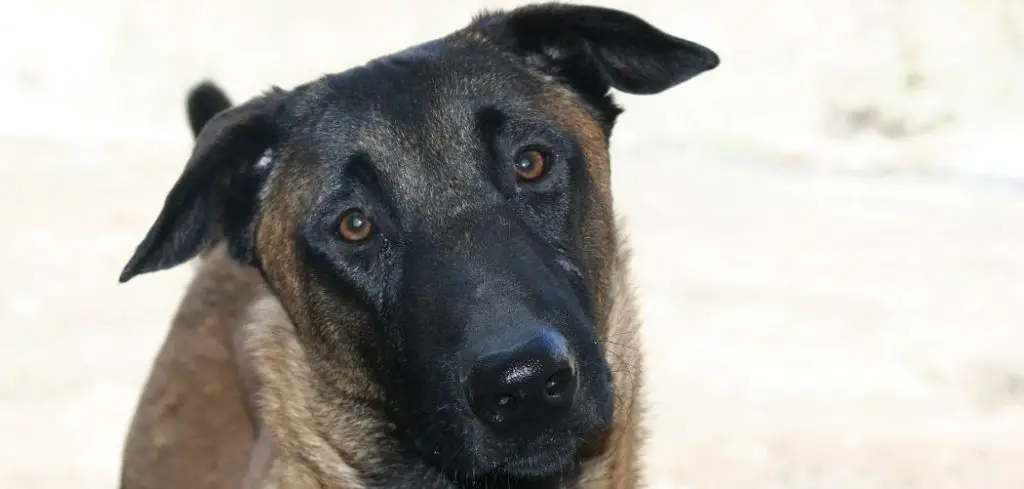When your dog is panting heavily and struggling to poop, it can be a distressing sight. These two symptoms together may point to discomfort, pain, or an internal problem that needs prompt attention. While constipation alone is relatively common, pairing it with panting often signals something more serious is going on.
We outline the common causes of dog panting and constipation, what you can do at home, and when to seek veterinary help.
Dog Panting and Constipated — Why It Happens
Dogs may pant and become constipated due to pain, dehydration, dietary imbalances, or underlying health issues that affect both digestion and comfort.
Panting reflects your dog’s response to stress or internal discomfort, while constipation suggests a problem in the digestive tract or related systems.

Common Causes of Dog Panting and Constipated Behavior
Dehydration
Dehydration is one of the most common causes of both constipation and panting.
When your dog doesn’t drink enough water, their stools become hard and dry, making it difficult to pass them.
Panting is also a sign of overheating or fluid imbalance and may accompany dehydration—especially in hot weather or after exercise.
Other signs include sunken eyes, tacky gums, and lethargy.
Rehydration and cooling measures are vital, and your vet may need to administer fluids if your dog can’t drink on their own.
Pain or Abdominal Discomfort
Straining to defecate while panting often means your dog is in significant discomfort.
This can be caused by impacted feces, rectal injuries, or conditions like hernias or perineal tumors that interfere with elimination.
Dogs in pain may also arch their backs, whimper, or avoid lying down.
Panting serves as a visible sign of pain—even if your dog isn’t vocalizing.
Veterinary exams and imaging can help determine the source of the discomfort and guide treatment.
Poor Diet or Lack of Fiber
A low-fiber diet or sudden dietary changes can disrupt digestion and lead to constipation.
Panting may not stem directly from the diet but from the resulting strain, bloating, or abdominal gas that causes discomfort.
Dogs with constipation due to diet may pass small, dry stools or skip bowel movements altogether.
High-fiber dog food, canned pumpkin, and hydration support can often restore normal function.
Foreign Object Obstruction
If your dog has eaten something they can’t digest—like bones, toys, or clothing—it may block their intestines or colon.
This can cause both constipation and intense abdominal pain, leading to restlessness and panting.
Other signs include vomiting, loss of appetite, and hunched posture.
This is a medical emergency that often requires imaging and possibly surgery.
Do not attempt to treat at home if a blockage is suspected.
Read more: Dog Panting and Shivering (What it means)
Neurological or Muscular Issues
Certain neurological conditions or spinal issues can impair the ability to control bowel movements.
Panting in these cases may be related to back pain or nerve discomfort.
Dogs may strain unsuccessfully, walk stiffly, or show signs of hind limb weakness.
These cases require veterinary evaluation, and treatment may involve medications, stool softeners, or neurological support.
Medication Side Effects
Some medications, such as opioids or antihistamines, can cause constipation as a side effect.
Panting may also occur as a reaction to pain, restlessness, or drug-induced anxiety.
If your dog recently started a new medication and these symptoms developed, speak with your vet.
They may adjust the dose, prescribe a stool softener, or recommend a different treatment.
What to Do If Your Dog Is Panting and Constipated
Ensure your dog has access to fresh water and try to encourage gentle movement, like a short walk, to stimulate digestion.
Offer a small amount of canned pumpkin or a vet-recommended fiber supplement.
Avoid giving human laxatives or enema products unless instructed by your vet—they can be dangerous for dogs.
Keep your dog in a cool, quiet space to reduce stress and help them relax.
Monitor for worsening symptoms like vomiting, lethargy, or attempts to poop without results.
When to Call or Visit Your Vet
Get veterinary help right away if your dog:
Has not pooped in over 48 hours
Is panting heavily while visibly straining
Has a bloated abdomen or cries out in pain
Is vomiting, weak, or not eating
May have eaten a foreign object
Early treatment can prevent complications like bowel obstruction or rupture.
Read more: Dog Panting and Diarrhea (When to worry)
Key Takeaway
When your dog is panting and constipated, it’s usually more than just a missed bowel movement—it’s a sign they’re uncomfortable, in pain, or dealing with a deeper health issue.
Prompt attention, hydration, and diet adjustments can help in mild cases, but don’t hesitate to contact your vet for guidance.
Your dog’s comfort and well-being depend on your quick and thoughtful response.
